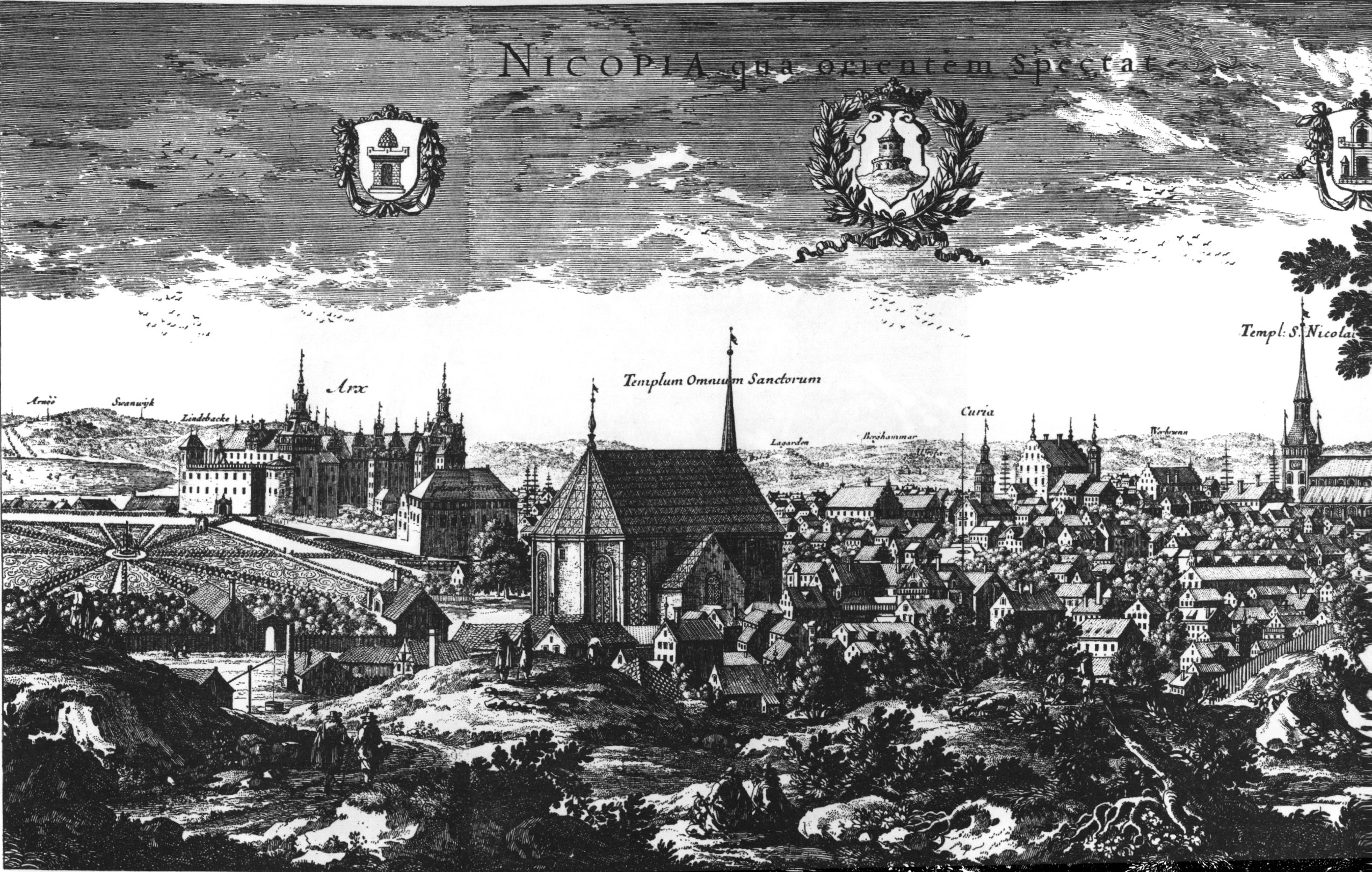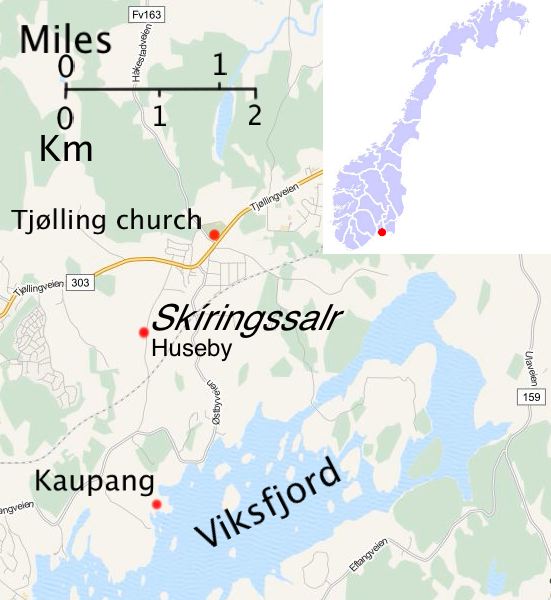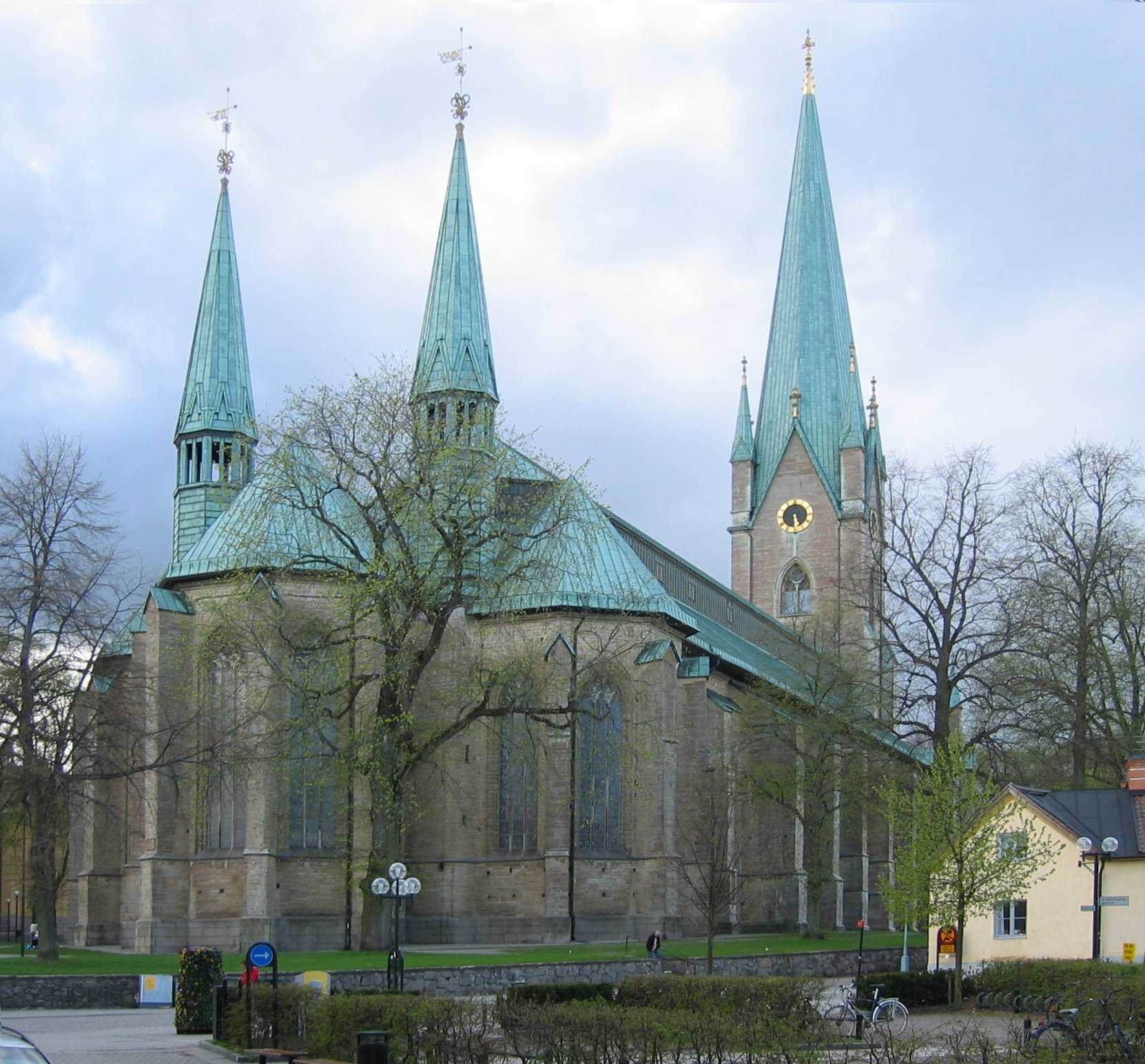|
Köping
''Köping'' was a Swedish denomination for a market town since the Middle Ages, derived from the Old Norse word ''kaupang''. The designation was officially abolished with the municipal reform of 1971, when Sweden was subdivided into the Municipalities of Sweden (currently amounting to 290). As present-day Finland was once a part of Sweden, the Finnish word ''kauppala'' has the same meaning. In modern Finnish, the word ''kaupunki'', borrowed from the Old Norse word ''kaupang'', is the main word for town and city. Swedish ''köping'' and the English toponym ''chipping'' are also cognates as is the Norwegian word ''kjøpstad'' and the Danish toponymical suffix '' -købing''. Sweden History In 1863 the first local government acts were implemented in Sweden. There were two acts, one for cities and one for rural areas. Of the around 2,500 municipalities, 89 had city rights and thus had the right to call themselves ''stad'' (city). Under the "rural" act there were also eight loca ... [...More Info...] [...Related Items...] OR: [Wikipedia] [Google] [Baidu] |
Köping, Sweden
Köping is a urban areas of Sweden, locality and the seat of Köping Municipality in Västmanland County, Sweden. It had 17,743 inhabitants in 2010. It is known for the television series ''I en annan del av Köping''. Etymology ''Köping'' means merchant place. It was mentioned for the first time in the 13th century. It was probably given such a name as it did not yet have a charter. The central location of Köping deems it appropriate for merchancy for people from different parts of the country. History People have lived on the site for a long time, which is evident not least from the Viking-age boat burial ground at Norsa. An old trading post has been located near Köping. It is first mentioned in a document from the year 1257, when a bishops' meeting was held on the site. Köping, with central and southern Sweden was Christianised, сhristianised in the 11th century. A church built around the year 1300, the Köping Church, still remains from the early days. Köping has be ... [...More Info...] [...Related Items...] OR: [Wikipedia] [Google] [Baidu] |
Nyköping
Nyköping () is a Urban areas in Sweden, locality and the seat of Nyköping Municipality, Södermanland County, Sweden with 32,759 inhabitants as of 2017. The city is also the capital of Södermanland County. Including Arnö, the locality on the southern shore of the bay just a couple of kilometres from the city centre, Nyköping would have above 36,000 inhabitants. Commonly, Arnö is referred to as a part of the city proper. It forms a wider conurbation with the neighbouring minor municipality and town of Oxelösund south of its outskirts. The municipality is much larger, although sparsely populated outside of the urban area. Nyköping directly translates to ''Newmarket'' into English. The prefix ''Ny'' is translated as New and ''köping'' is an old Swedish word for a market place and a commonly used suffix for cities in the south central region of the country (see Köping). The city is located near the open Baltic Sea on the Stadsfjärden inlet, and is regarded as a coastal loc ... [...More Info...] [...Related Items...] OR: [Wikipedia] [Google] [Baidu] |
Kjøpstad
A (historically: ''kjøbstad'', ''kjöbstad'', or ''kaupstad'') is an old Scandinavian term for a "market town" that was used in the Kingdom of Denmark-Norway for several hundred years. The name comes from the on, kaupstaðr. Kjøpstads were places of trade and exporting materials (e.g. timber, flour, iron and other common goods). Towns were given the "dignity" or rank of being referred to as a ''kjøpstad'' when they reached a certain population and had established means of industry and other notable items such as dock yards, steam mills, iron works, churches, grammar schools. The citizens of a kjøpstad were able to buy and sell goods and conduct other economic activities. Ladested Norway also had a subordinate category to the market town, which was the "small seaport" ( no, ladested) or . These were a port or harbour with a monopoly to import and export goods and materials in both the port and a surrounding outlying district. These places were usually subordinate to the ... [...More Info...] [...Related Items...] OR: [Wikipedia] [Google] [Baidu] |
Kaupang
Kaupang was a Norse term for ''market-place'' composed of kaup- (buy) and angr (fjord, harbor), hence "buy fjord" or "buy harbor" (similar to the literal translation of Copenhagen). Today, it is generally used as a name of the first town-like market-place in Norway, the '' Kaupang in Skiringssal'', which is located in Tjølling near Larvik in Vestfold. Kaupang was an important merchant and craft center during the Viking period and as yet the first known Norwegian trading outpost. Kaupang is home to remains for the oldest Nordic town yet discovered. At Kaupang lie remains of one of Scandinavia’s earliest urban sites, established in year 800 A.D. Kaupang was abandoned in the mid-10th century. It has been described as Norway’s most important monument from the Viking Age. History Kaupang was founded in the 780s and abandoned for unknown reasons in the early 10th century. It was situated on a beach by Viksfjord in Larvik municipality. Documentary sources indicate that th ... [...More Info...] [...Related Items...] OR: [Wikipedia] [Google] [Baidu] |
Lidköping
Lidköping () is a locality and the seat of Lidköping Municipality in Västra Götaland County, Sweden. It had about 40 000 inhabitants in 2021. It is situated on the southern shore of Lake Vänern and sometimes refers to itself as "Lidköping vid Vänern", to distinguish itself from Linköping near Sweden's east coast. Attempts have been made to change the official name to "Lidköping vid Vänern" but these attempts have not been successful. Geography The town of Lidköping is divided by the Lidan River, flowing through the central city. The eastern side of it is called the old town, and the western side is known as the new town. File:Lidan river in Lidköping in the evening.jpg, Lidan river in Lidköping in the evening File:Mina ship on Lidan, Lidköping.jpg, :Mina ship (1876) on Lidan, Lidköping The municipality of Lidköping is, together with its eastern neighbor Götene, located on the Läckö-Kinnekulle peninsula. In association with several large local companies, t ... [...More Info...] [...Related Items...] OR: [Wikipedia] [Google] [Baidu] |
Municipalköping
Municipalköping was a type of local government (municipality) in Sweden. Mostly these were minor trade towns with very limited city rights (market rights), which were delegated from larger cities in the same region. In 1863 the first local government acts were implemented in Sweden. Officially, the term ''municipalköping'' disappeared with this reform. There were two acts in the 1863 reform, one for towns and one for rural areas. But under the "rural" act there were also eight market towns, which were instituted as municipalities. This third category included ''köping'', ''municipalköping'' and ''municipalsamhälle''. Most of the 95 ''köpingar'' became municipalities. The last ''municipalköping'' was incorporated into a large municipality in 1956. Those market towns that did not develop into a municipality are now occasionally referred to as ''municipalköping'', which is more a cultural term in the present-day language. Settlements that were ''municipalköpingar'' See ... [...More Info...] [...Related Items...] OR: [Wikipedia] [Google] [Baidu] |
Norrköping
Norrköping (; ) is a city in the province of Östergötland in eastern Sweden and the seat of Norrköping Municipality, Östergötland County, about 160 km southwest of the national capital Stockholm, 40 km east of county seat Linköping and 60 km west of the Södermanland capital of Nyköping. The city has a population of 95,618 inhabitants in 2016, out of a municipal total of 130,050,Folkmängd i Norrköpings kommun den 31 December 2010 making it Sweden's tenth largest city and eighth largest municipality. The city is situated by the mouth of the river , at |
Jönköping
Jönköping (, ) is a city in southern Sweden with 112,766 inhabitants (2022). Jönköping is situated on the southern shore of Sweden's second largest lake, Vättern, in the province of Småland. The city is the seat of Jönköping Municipality, which has a population of 144,699 (2022) and is Småland's most populous municipality. Jönköping is also the seat of Jönköping County which has a population of 367,064 (2022). Jönköping is the seat of a district court and a court of appeal as well as the Swedish National Courts Administration. It is the seat of the Swedish Board of Agriculture. County government The Jönköping municipality has its headquarters in a place called "rådhuset". Rådhuset is an important component of the function of the municipality as it works as a state office for different departments of and in jönköping. Rådhuset is dependent on the municipality but is its own entity, the head of the rådhuset has political power but is not the head of the jö ... [...More Info...] [...Related Items...] OR: [Wikipedia] [Google] [Baidu] |
Linköping
Linköping () is a city in southern Sweden, with around 105,000 inhabitants as of 2021. It is the seat of Linköping Municipality and the capital of Östergötland County. Linköping is also the episcopal see of the Diocese of Linköping (Church of Sweden) and is well known for its cathedral. Linköping is the center of an old cultural region and celebrated its 700th anniversary in 1987. Dominating the city's skyline from afar is the steeple of the cathedral, Domkyrka. Nowadays, Linköping is known for its university and its high-technology industry. Linköping wants to create a sustainable development of the city and therefore plans to become a carbon-neutral community by 2025. Located on the Östergötland Plain, Linköping is closely linked to Norrköping, roughly to the east, near the sea. History The city is possibly named after the '' Lionga ting'' assembly which according to Medieval Scandinavian laws was the most important thing in Östergötland. Exact location ... [...More Info...] [...Related Items...] OR: [Wikipedia] [Google] [Baidu] |
Örebro County
Örebro County ( sv, Örebro län) is a county or '' län'' in central Sweden. It borders the counties of Västra Götaland, Värmland, Dalarna, Västmanland, Södermanland and Östergötland. It is frequently culturally divided into the hilly northern region of Bergslagen, where mining and metallurgic industry have been important since the Middle Ages, and the southern Mälardalen of lakes and farms. Province Sweden's counties are primarily administrative units, whereas the provinces of Sweden usually fit cultural and historical boundaries. Örebro County consists of the province of Närke, the western half of Västmanland and minor parts of eastern Värmland and northeastern Västergötland. Örebro County is named after its capital city, Örebro, which in 2010 was the sixth largest city of Sweden. Official 2010 numbers sourced in the localities section indicate that 38% of the county population is living in the city of Örebro alone. Örebro itself contains just as many in ... [...More Info...] [...Related Items...] OR: [Wikipedia] [Google] [Baidu] |
Östergötland County
Östergötland County ( sv, Östergötlands län) is a county or ''län'' in southeastern Sweden. It has land borders with the counties of Kalmar to the southeast, Jönköping to the southwest, Örebro to the northwest, and Södermanland to the northeast. It also has a sea border with Västra Götaland to the west (across lake Vättern), and borders the Baltic Sea to the east. Östergötland County has a population of 456,550 (September 30, 2017) and the capital and biggest city is Linköping. Linköping and neighbouring twin city Norrköping together form one of Sweden's metropolitan areas; The Linköping-Norrköping Corridor is therefore sometimes marketed as ''The Fourth Metropolitan Region'' of Sweden, the other three being Stockholm, Gothenburg and Malmö. Princess Estelle is Duchess of Östergötland. Province ''For History, Geography and Culture see: Östergötland.'' Östergötland has virtually the same boundaries as the current administrative entity, the Östergötl ... [...More Info...] [...Related Items...] OR: [Wikipedia] [Google] [Baidu] |
Jönköping County
Jönköping County ( sv, Jönköpings län) is a county or '' län'' in southern Sweden. It borders the counties of Halland, Västra Götaland, Östergötland, Kalmar and Kronoberg. The total county population was 356,291 inhabitants in September 2017. The capital and largest city is Jönköping. About one quarter of the total county population lives in the combined Jönköping-Huskvarna urban area around the southern point of Lake Vättern. Provinces and administrative history Despite being commonly used to indicate the geographical, cultural and historical region, the larger historical province ''(landskap)'' of Småland, which most of Jönköping County is part of, has no administrative or political significance today. Jönköping County has existed as an administrative division since the 17th century, and constitutes the north-western part of Småland, the other parts being Kronoberg County in the south-west and Kalmar County in the east. Jönköping County was periodica ... [...More Info...] [...Related Items...] OR: [Wikipedia] [Google] [Baidu] |







